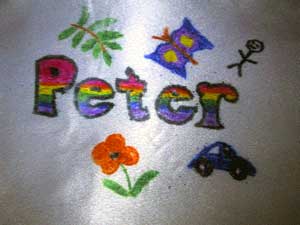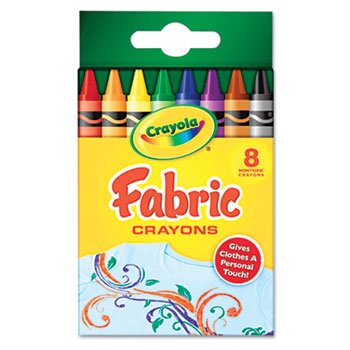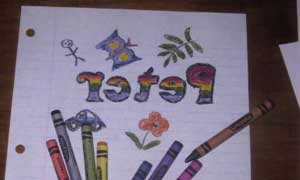 Fabric Crayons make a nice dyeing project for children. The crayons are made of disperse dye—don't confuse them with the ordinary wax crayons that they so closely resemble! You CANNOT do this project with regular crayons.
Fabric Crayons make a nice dyeing project for children. The crayons are made of disperse dye—don't confuse them with the ordinary wax crayons that they so closely resemble! You CANNOT do this project with regular crayons.
 Fabric Crayons make a nice dyeing project for children. The crayons are made of disperse dye—don't confuse them with the ordinary wax crayons that they so closely resemble! You CANNOT do this project with regular crayons.
Fabric Crayons make a nice dyeing project for children. The crayons are made of disperse dye—don't confuse them with the ordinary wax crayons that they so closely resemble! You CANNOT do this project with regular crayons.
Disperse dye works well on synthetic fibers, such as polyester, nylon, acrylic, or acetate. It does not work at all on natural fibers such as cotton, silk, or wool, nor on reprocessed cellulose fibers such as rayon, Tencel (lyocell), or bamboo. An ideal material is a white 100% polyester in a smooth satin weave.
Advertisement

Many fabric stores sell these fabric crayons. Sometimes you can also find them in the tiny sewing departments at stores such as Walmart. If you wish, you can order them through Amazon via the following link: Crayola Fabric Crayons. (If you do, this site will receive a small percentage of the cost of the item.)

You'll need a hot dry iron to transfer the fabric crayon from the paper to the fabric. Use several layers of newspaper, topped with plain white paper, as a pad to protect your ironing board. Lay the design you've colored face-down on the fabric you've chosen, and place another sheet of paper on top, to protect your iron. Empty any water out of your steam iron before starting, and use a cotton setting. Be careful not to shift the paper as you iron, as this will blur your results.
ADVERTISEMENTS
All of the pages on this site are copyright ©1998-2025 Paula E. Burch, Ph.D.
Page created: January 8, 2007
Last updated: June 30, 2013
Downloaded at: Tuesday, December 16, 2025